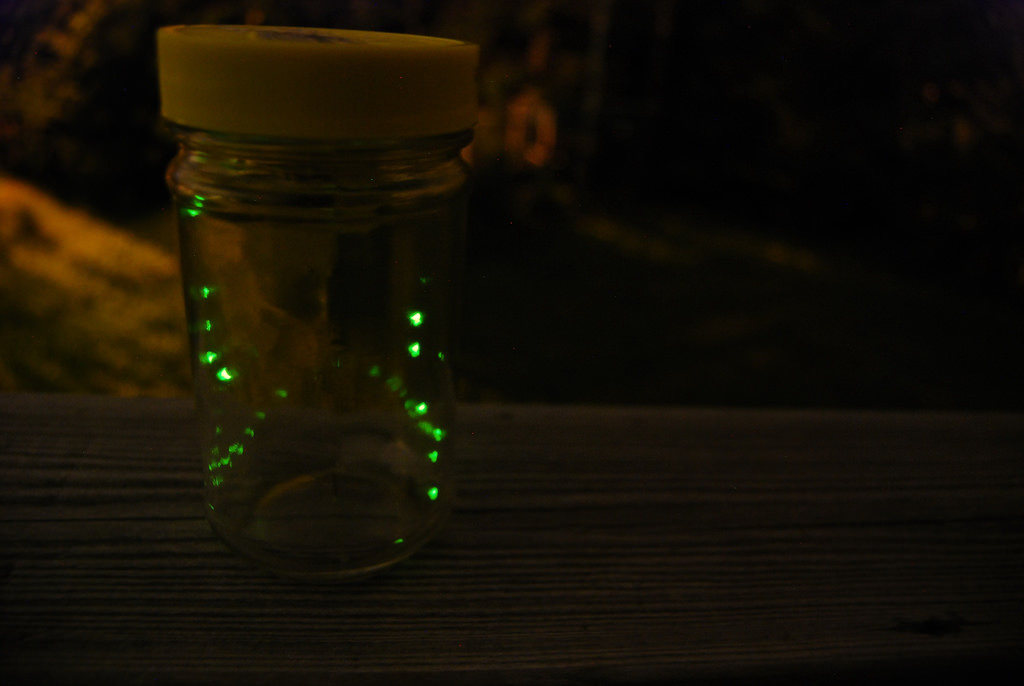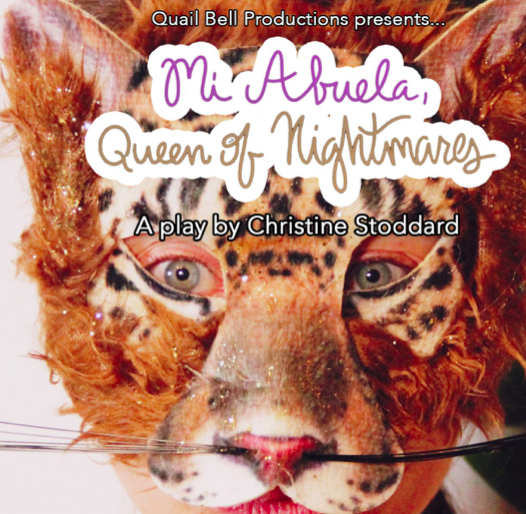|
The Breadcrumbs widget will appear here on the published site.
Firefly SeasonBy Linda Lowen QuailBellMagazine.com *Editor's Note: An earlier version of this piece titled "Flashes in the Dark" first appeared in Family Times. My daughters know where the fireflies live. Ask and they'll tell you: under the cedar trees where the myrtle's so thick the forest floor stays cool and damp. If you stand there patient and silent, hopeful and watchful, at dusk you'll see the first firefly drift upwards, its soft glow standing out against the trunks of trees fading into darkness. Often a fine mist rises at ground level, adding to the mystery and magic of the fey, blinking lights. That's where the fireflies live. That's when they come out. But you won't ask because you're not a child. Once we learn the science behind the luminescence, the biology of why they blink and glow when other insects don't, our fascination with lightning bugs dims. The knowledge that they aren't magic made real dulls the keen edge of childhood wonder. Yet my daughters still fall under their spell. Em and Jaye are in their early twenties with jobs and bills. Possibilities have given way to practicalities. The vast black-topped expanse they once viewed as their seasonal canvas, waiting to be transformed under the scrape of sidewalk chalk, is now just a driveway to park their cars. On humid summer nights I witness one daughter or the other pull in, get out, and pause. Beyond the blacktop and the patchy grass of the side lawn is a sprinkling of trees separating our yard from the neighbor's property. The cedars hold court there, branching so thickly that at twilight they fool the eye into seeing an actual forest. The growing darkness holds enough promise to draw one's gaze toward the trees, the myrtle ground cover, the mist. In that moment--in that pause--time reverses and my daughters are children again, waiting for a glimpse of magic. And on nights when they're not out there, I keep watch. Although no real estate listing includes "Firefly friendly" under Property Details, when I went looking for the home in which I'd planned to raise a family, I steered my husband toward houses that backed up to woods. I didn't tell him, "I'm hoping to raise fireflies as well," but I grew up in a neighborhood surrounded by fields and forests, and I wanted that for my girls. When the four of us moved into our tree-shaded house in upstate New York--the one we still live in two decades later--it was early September. Too late for firefly season according to Kristian Demary, a biologist with the Boston Museum of Science; she says that most flashing species of fireflies in the Northeast come out between Memorial Day and Labor Day. We had to wait another nine months to see if our hilltop neighborhood had the right combination of trees, moisture, and grassy areas to create the ideal habitat. My memory isn't reliable anymore; it blinks on and off like a firefly attracting a mate. I can't share the details of our first firefly sighting in our new home because there were so many others through the days, weeks, and months that followed, firefly season after firefly season, year after magical year. What I do recall is inexact, framed by no time in particular, occurring in no space other than my imagination. I remember how I felt standing there in the dark, waiting to spot a firefly. It's like holding onto hope. Faith is what keeps you rooted, sustains your optimism, buoys your belief. Just when hope began to fade--at the moment I would acknowledge to myself it was too dark and too late to expect anything--the woods behind our house would come alive with pulses of light, and the girls would dance in the dim twilight, cupping their hands and swiping at flashes. Jaye ran to me once with her arm extended to show me a streak of faint but steady light smeared across her skin. I explained it was a smushed bug and that the glow wouldn't last. She grew somber and vowed not to hurt any others. Though our intentions were good, we weren't completely innocent of any crimes against nature. We ran outside with jars just like generations of kids and parents before us. But we only imprisoned our fireflies for a short while. We tried to be considerate gaolers. We punched holes in the lid, placed a piece of damp paper towel at the bottom of the jar, added a handful of grass. Before we went inside and upstairs to bed, we always set them free. The first flakes of snow often delight us, but by the time we see three feet on the ground the charm has melted away. Not so with fireflies. The girls and I could never get enough of that serendipitous, intermittent concert of pale color--those pinpoints of light blossoming, then fading into the dark, all within the span of one brief hour. Firefly season seemed to grew shorter the older they got. When Jaye went away to college, she emailed me me a Pinterest link featuring faux fireflies in a jar. The instructions called for a clear glass vessel, three glow sticks, and glitter. Snap and activate the glow sticks, snip off one end, splatter/squeeze the contents into a jar, add a touch of glitter, and voila! The end result looked Photoshopped, a poor attempt to bottle the magic out of season. Even in season, fireflies are becoming rare in many areas, including my backyard. Over the years, our backwoods have thinned. A weather event locals still refer to as "The Labor Day Storm" knocked down 35 trees in the woods behind our home. Others fell when new neighbors clear-cut their land to install an in-ground pool. Still more were lost when one property owner decided green lawn would look nicer than dense brushwood. We no longer see any fireflies out back. Maybe it's too open, too dry. Or maybe it's due to what Firefly.org describes as a dwindling firefly population, occurring not just in our neighborhood but around the world due to overdevelopment, pesticides, and light pollution. Still, we're lucky--our side yard remains a reliable habitat. Between the dense growth of myrtle, the decomposing logs hidden beneath their glossy leaves, and the cooler northern exposure, there's plenty of moisture and organic matter for the grub stage of the firefly's life cycle, which lasts up to two years. The fact that the flying insects only glow during the last two weeks of their lives makes their beauty even more poignant. This summer, like every other, I stand at the edge of the trees looking for twinkling bursts of light moving low to the ground or floating up toward the trees. When I spot them, I call Em over, and Jaye too if she's home for a visit. Our unfailing awe and wonder is proof that we're never too old for fireflies. So ask us where they live. Better yet, come over and watch them with us. Summer may be short, and firefly season even shorter; but as long as the fall of night is heralded by those darting, glowing creatures just outside my door, I continue to believe. Magic is real. Anything is possible. #Real #SummerNostalgia #PersonalEssay #Fireflies #SummerNights #Daughters Visit our shop and subscribe. Sponsor us. Submit and become a contributor. Like us on Facebook and follow us on Twitter.
Comments
Bobbi Palmer
6/11/2016 02:36:30 pm
What a beautiful, enlightening story! Thank you so much for publishing it. Comments are closed.
|
|










